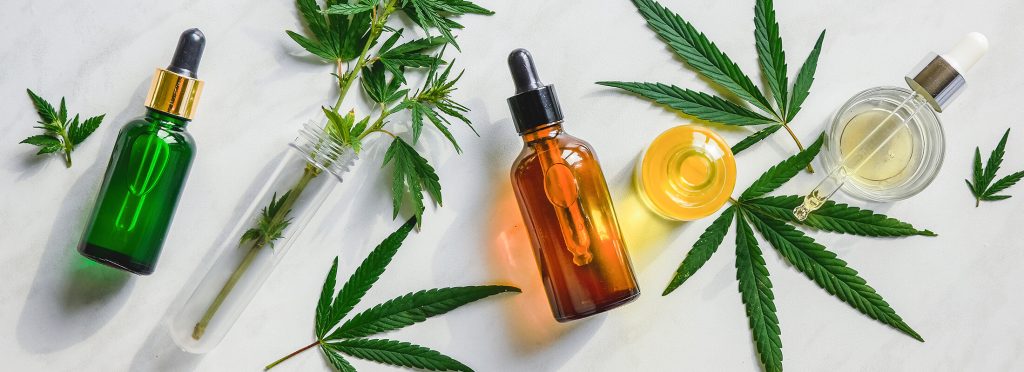History of Hemp
Did you know that humans have used the hemp plant for about 10,000 years? This makes it one of the oldest plants ever used by humankind.
Hemp is also estimated to have more than 25,000 uses. This can be attributed to its long, strong fibers and rich nutritional profile that provides a wide range of health benefits for both humans and animals.
At one point, the hemp plant was the most dominant cash crop on the American landscape. But what happened over time? Why has it received so much backlash over the last century?
To understand all this, let’s start from the very beginning and learn about the history of hemp:
The Complete History of Hemp
Here are some hemp history facts – from when it was first discovered to today:
8000 BC (Stone Age): Hemp First Discovered in Central Asia
The hemp plant originated from Central Asia – particularly China and Taiwan – and was primarily cultivated for its fiber. Remains of hemp fiber imprints on pottery shards have been discovered on several archeological sites, especially near the Yangtze and Yellow Rivers.
The hemp plant originated from Central Asia – particularly China and Taiwan – and was primarily cultivated for its fiber.
Over the next 7,000 years, Ancient China used hemp for food, medicine, and textile – promoting the civilization of ancient Chinese empires. Its use also spread to other Asian regions such as Mongolia and India.
2000 BC – 1700 BC: Hemp in Africa
According to the Ebers Papyrus (a collection of Egyptian medical texts that date back to around 1500 BC), ancient Egyptians used hemp in treatment for sore eyes, inflammation, and hemorrhoids. Hemp pollen was also found on the Mummy of Ramesses II – the third pharaoh of the 19th Dynasty of Egypt.
The cultivation and use of hemp later spread to other regions of Africa, including Ethiopia and Mozambique.
1500 BC – 300 AD: Hemp in Europe
Hemp was introduced in Northern Europe by the Scythians – a large, barbaric group of Eurasian nomads known for creating the first-ever Central Asian nomadic empire. Scythians used hemp for recreational purposes, food, and fumigation.
Hemp was also an integral part of the Scythian burial and cleansing rituals. After the death of a prominent person, this tribe would set up tepee-like structures that they would enter to inhale hemp fumes thrown on red-hot stones.
Hemp was widely accepted and cultivated in Europe, where it quickly spread to Russia, Greece, Italy, Spain, and beyond. It was mainly used for food, medicine, and making ropes. During the 3rd century, the then Roman Emperor – Aurelian – imposed a tax on Egyptian hemp.
1000 AD – 1500 AD: Hemp in England
This period is popularly known as the Golden Age of Sail, which was characterized by sailing ships used for international trade and naval warfare. The trade escalated the spread of hemp use and hemp products all over the world.
Hemp was a popular trading commodity because it didn’t go bad easily. In comparison, other similar products like flax could rot in as little as three months, especially when exposed to the ocean’s salt sprays.
In the early 1500s, King Henry VIII announced that all landholders in England should set aside at least a quarter of their land for the cultivation of hemp or flax to boost the supply of fiber in the region. Some years later, Queen Elizabeth I imposed a £5 fine for any eligible landowner who failed to comply. Being a strategic raw commodity, hemp became crucial to England’s dominant economy and navy. This thriving economy sped up the exploration and colonization of the Americas.
It’s believed that hemp was first introduced to North and South America by Spanish colonists in present-day Mexico and Chile around this time.
1600 AD – 1700 AD: Hemp in America
English settlers in Jamestown, VA, started cultivating hemp in their “New Found Land” in around 1606. They mainly used it for rope, clothing, paper, lamp fuel, and other textiles.
In the 1700s, U.S. farmers in Virginia and several other colonies were required to grow hemp or face hefty fines or imprisonment.
In the 1700s, U.S. farmers in Virginia and several other colonies were required to grow hemp or face hefty fines or imprisonment. This was to ease up the increased demand for hemp from England, which was proving to be unreliable and expensive.
1700 – 1850: The Hemp Economy in the U.S. is Thriving
In the early and mid-1700s, hemp was popularly used as legal tender as it was considered more valuable than money at that time.
In 1776, drafts of the Constitution and Declaration of Independence were written on hemp paper because this was the most common type of paper available at that time. The finished documents were written on paper made from animal skin. In the same year, the continental army under George Washington used clothing made from hemp fiber due to its durability.
What’s more, the construction of the U.S.S. Constitution (a wooden-hulled, three-masted navy frigate) required about 120 pounds of hemp for the manufacture of sailcloth, rope, and lining. Some of the ropes and sailing cloth from the ship are still present to this day – only a strong and durable fiber can last this long.
The construction of the U.S.S. Constitution (a wooden-hulled, three-masted navy frigate) required about 120 pounds of hemp for the manufacture of sailcloth, rope, and lining.
The U.S. founding fathers were also in support of the cultivation and production of hemp. For instance, in one of George Washington’s articles, he advocated for the growth of hemp because of its lucrative economic value.
Thomas Jefferson was known to cultivate hemp and wrote several publications about proper hemp growing practices. Jefferson also received a patent for a hemp threshing machine that cleans hemp produce by separating the seeds from the stalks.
Thomas Jefferson was known to cultivate hemp and wrote several publications about proper hemp growing practices.
1850 – 1920: Hemp is Used for Medicine and Recreation
In 1850, the U.S. census counted more than 8,000 hemp farms in America. These were only farms with 2,000 acres or more, meaning the number of farms in the country was way more. During this time, there was a lot of medical hemp dispensaries around the country. In 1890, Sir J. Russell Reynolds, M.D., F.R.S., described hemp as one of the most versatile medicines on earth.
In 1850, the U.S. census counted more than 8,000 hemp farms in America.
Additionally, in a 1916 USDA report, it was revealed that an acre of hemp field could produce up to four times more paper than conventional trees.
In the late 1800s and early 1900s, a flux of Mexican immigrants introduced Cannabis as a recreational drug, and it quickly became widespread in the country. Unfortunately, it’s recreational use was associated with insanity, violent crimes, and other vices.
1930 – 1970: The Fall of Hemp Cultivation
During the early 1930s, the stance on this miracle crop began to change. This was primarily due to its association with Cannabis. In 1937, the government introduced the Marijuana Tax Act, which imposed hefty occupational taxes on anyone who sells, acquires, dispenses, or possesses any type of Cannabis. As a result, hemp farmers slowly abandoned the crop.
In 1942, during World War II, the government reversed its stance on the crop in an effort to support the war. The Department of Agriculture released several hemp publications and documentaries that highlighted how the production of hemp could help support the war.
Unfortunately, this resurgence was short-lived. As the war ended, the stance on Cannabis reverted, and the hemp industry went into a downward spiral, boosting the production of nylon and plastic.
In 1970, the Controlled Substance Act totally banned hemp farming in the U.S. because hemp was classified as a Schedule 1 drug alongside L.S.D. and heroin. The law was maintained even after it sparked outrage from hemp farmers and supporters all over the country.
2018: A Turning Point (2018 Farm Bill)
The 2018 Farm Bill was the most significant shift in the history of hemp. It legalized the cultivation and use of hemp and its products as long as they contain 0.3% T.H.C. or less. Hemp was also no longer classified as a Schedule I substance like Cannabis.
The 2018 Farm Bill was the most significant shift in the history of hemp.
Immediately, there was a spike in demand for hemp, and this has led to more farmers to shift from other cash crops to hemp.
What is the History of CBD?
CBD, or cannabidiol, might feel like it’s a modern phenomenon, but it’s been around for far longer. As a naturally occurring substance it’s been a component part of a family of plants that have existed for tens of thousands of years, even if human society has been slow to understand its properties. With over 6 million people having used CBD in the UK in the past year, evidently that understanding is growing.
This period of explosive growth can actually be traced back through the millennia, with many records suggesting that hemp is one of the earliest plants cultivated by humanity. In many different cultures across the world there are clear details relating to the use of cannabis and hemp. Let’s piece together where this journey alongside CBD began.
How was hemp used historically?
The cannabis family as we know it today is broad and multifaceted, with hundreds of different strains and colours and smells and potencies, but that’s a product of human experimentation. The origins of human interaction with cannabis, and therefore CBD, has much simpler roots than that, if you’ll pardon the pun.
The cannabis plant is indigeneous to Central Asia, and particularly the Indian subcontinent, though its usage spreads much further. Archaeological records suggesting its cultivation dates back to the end of the first ice age with the birth of agriculture 10,000 to 12,000 years ago. As a strong, fibrous material, hemp was probably the earliest plant cultivated for textile fibre!
There’s obviously a difference between hemp plants and CBD usage however, but even CBD usage has been recorded several thousand years ago. It’s hard to pinpoint the first time cannabis would have been used for something other than textiles, but in 2737 BC there was the first documented use of cannabis-derived medicine by Chinese Emperor Sheng Nung. Rather than CBD oils, he drank cannabis-infused tea!
Moving to the more modern era, hemp was until very recently considered an essential crop. King Henry VIII actually fined farmers for not growing industrial hemp in 1533! Then, nearly a hundred years later in 1619, settlers in Virginia made it illegal not to grow hemp. Given the plant’s illegality now in some parts of the world, it’s hard to imagine how integral it was seen to everyday life. At Vitality CBD, we’re happy to be bringing it back to prominence.
How and when was CBD discovered?
Even if hemp has been cultivated and used in many different forms by humanity for a very, very long time, we didn’t truly understand it’s properties until the last 100 years or so. With the advancement of both biology and organic chemistry, we’re now in a much better position to break down the molecular make-up of the cannabis plant, including CBD.
CBD, an abbreviation of cannabidiol, was first discovered in 1940 by Roger Adams. He isolated both CBD and another cannabinoid called CBN (cannabinol) from the hemp plant, and hypothesised about the existence of the psychoactive chemical THC (tetrahydrocannabinol). It wasn’t until 1964 that THC was isolated by Raphael Mechoulam—one of the leading names in cannabis science!
It was through Mechoulam’s work that the stereochemistry (the 3-D molecular form) and properties of both CBD and THC were identified. What’s fascinating is that given how THC is often associated with the high you get from ingesting cannabis, CBD was identified beforehand! Clearly, CBD has always been a very important molecule.



